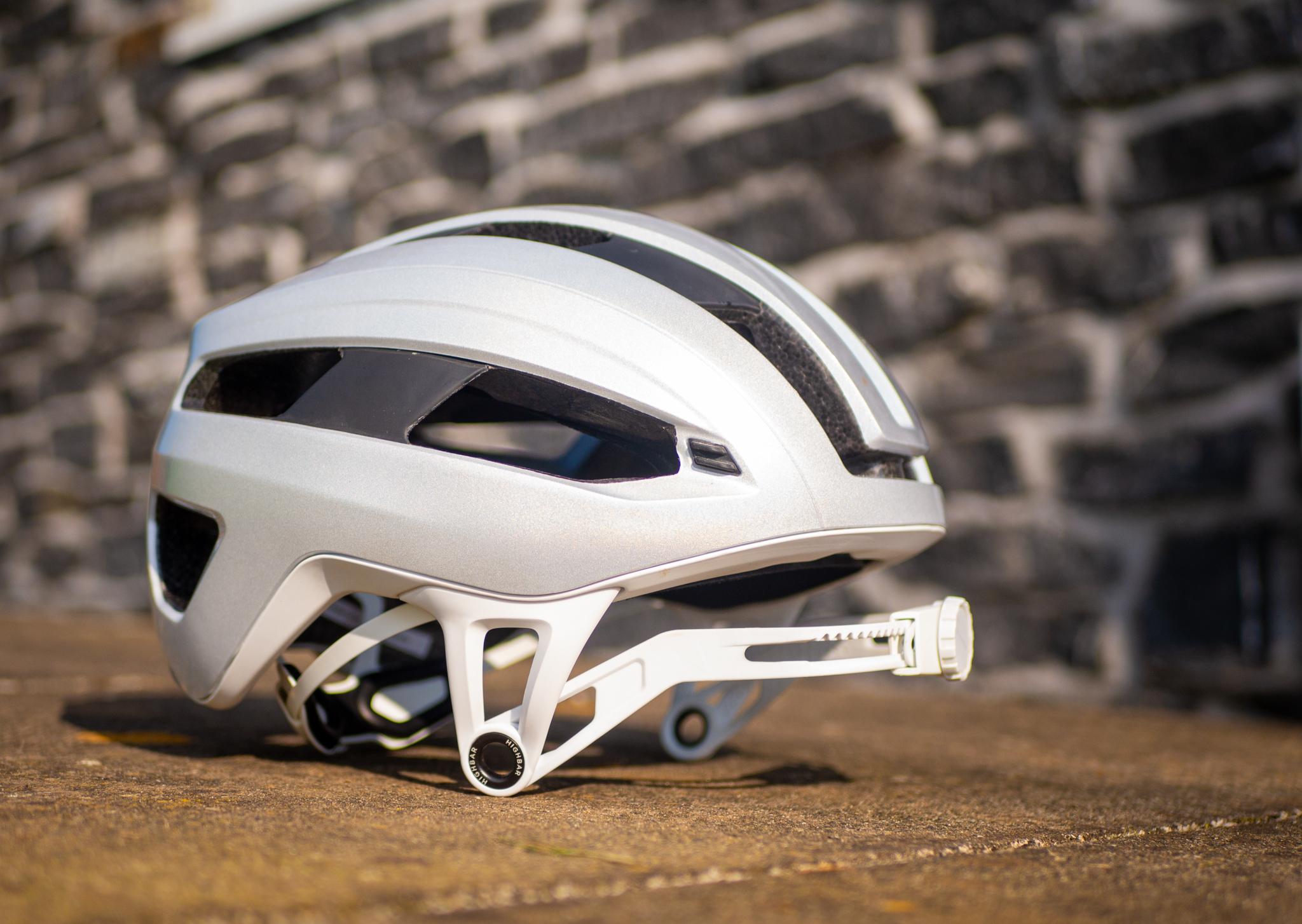
"You look like a construction worker!" Perhaps not the one-line summary that Highbar would have wanted for its new, unusual, innovative, still-unreleased helmet collaboration, but that's the quip that came from one of my friends as I rolled across the car park ahead of the Gralloch gravel race in Scotland.
I was there for fun, but an opportunity presented itself to test the new helmet that swaps traditional fabric straps for a rubberised, pivoting arm that tightens with a dial. I couldn't refuse; I had to see whether the brand's claims would stand up in the real world.
The strap-replacing system is called Highbar, and my friend's perhaps slightly unfair commentary perfectly reflected the line of questioning that everyone I spoke to about it followed: "It looks weird, what's the point?"
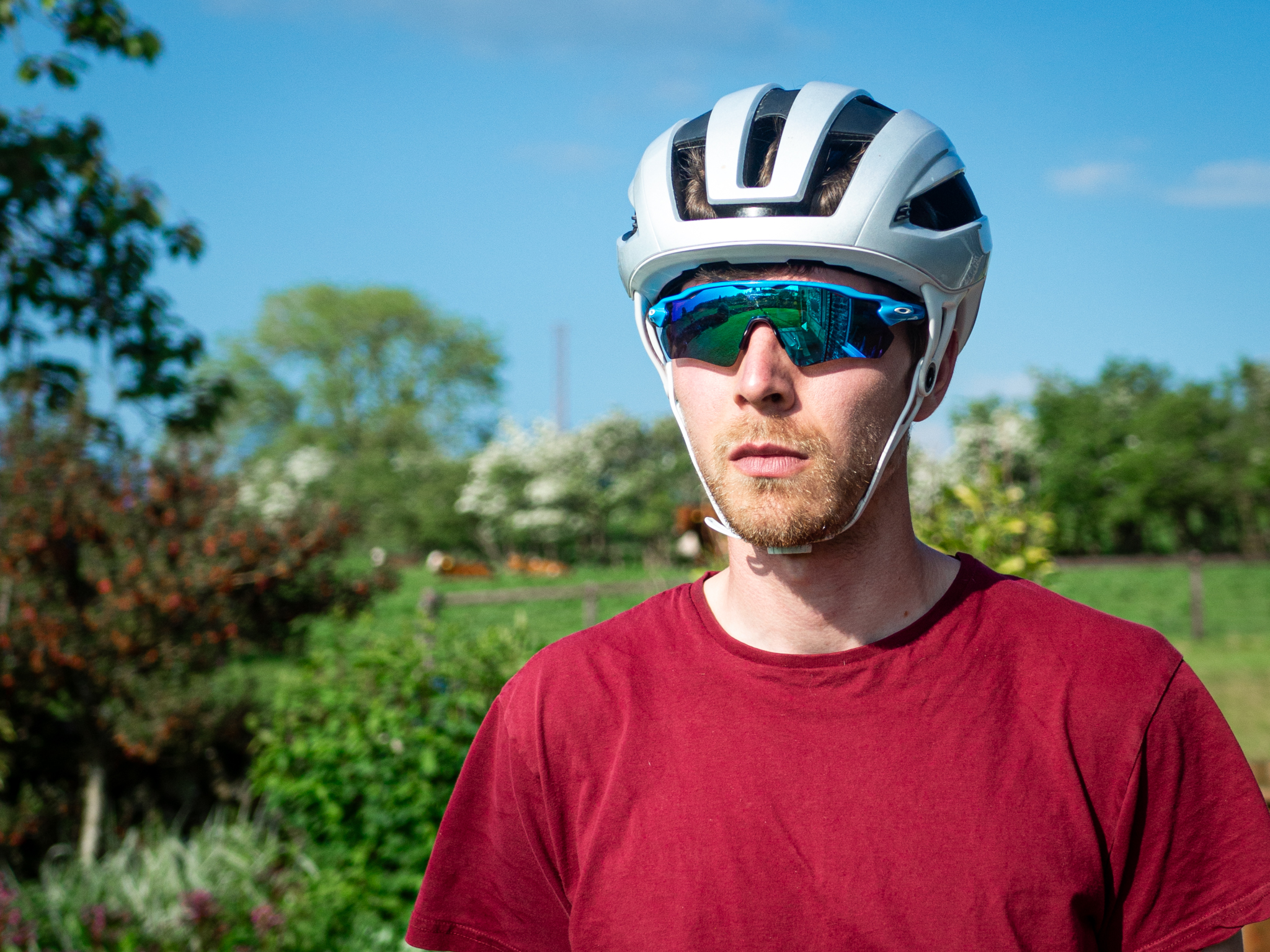
As we all know, cyclists are a fickle bunch. We'll happily shave our legs, contort ourselves into a one-piece skinsuit, don our aero socks and wear an aero helmet, but anything different is immediately weird and uncool… unless you can prove it's somehow better.
Designed in conjunction with Frank Hermansen and Carl Winefordner, who you may know as the Crank Brothers, the Highbar strap is just one part of the overall product. The rest needs to come from elsewhere. Highbar is looking to license its system to other brands in a similar way to how MIPS operates, or how Boa operates with shoe retention dials. The Highbar system needs to be moulded in as part of the helmet's design, so it needs buy-in at this level. It can't be bought as an aftermarket add-on by a consumer.
This particular helmet is the first partnership over the line, though it's yet to be released. It has Canyon branding and has been spotted on the heads of Canyon-Collective riders, Carolin Schiff and Petr Vakoc. It was paraded around Sea Otter by the Highbar team in April, but Canyon has yet to publicly acknowledge its existence.
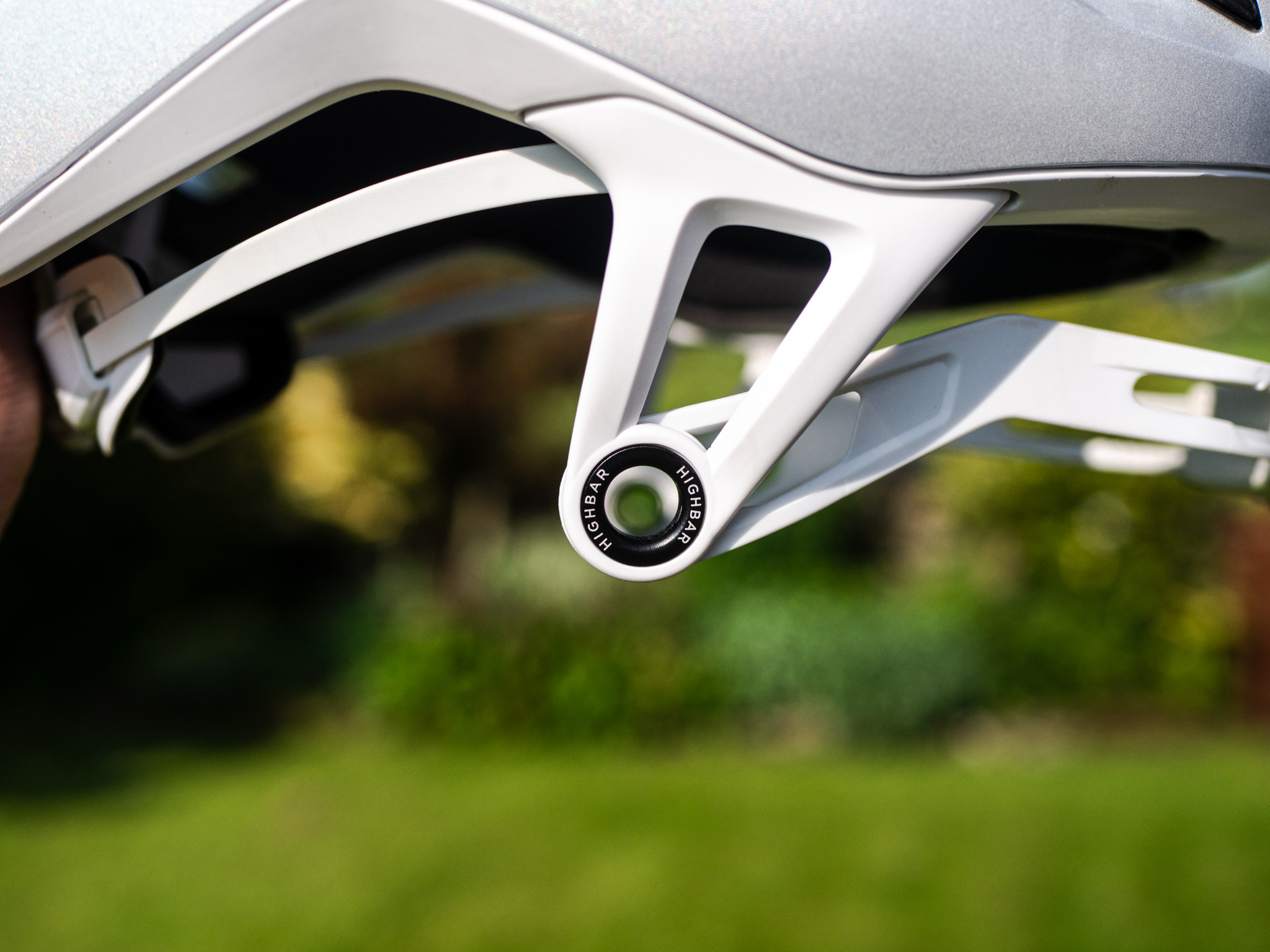
Design
The Highbar strap system connects to the underside of the helmet near your temples on either side of your head. The anchor is moulded deep inside the helmet's EPS foam, but the parts you can see are V-shape pieces of rubberised plastic that protrude downward, with a pivot point at the bottom of the V.
They connect somewhat outboard of the helmet's structure, and they curve marginally outwards before returning in to follow the shape of your face. This means they don't touch your face, which aids comfort and improves airflow, and means you must commit the cardinal sin of wearing your sunglasses on the inside of your helmet straps.
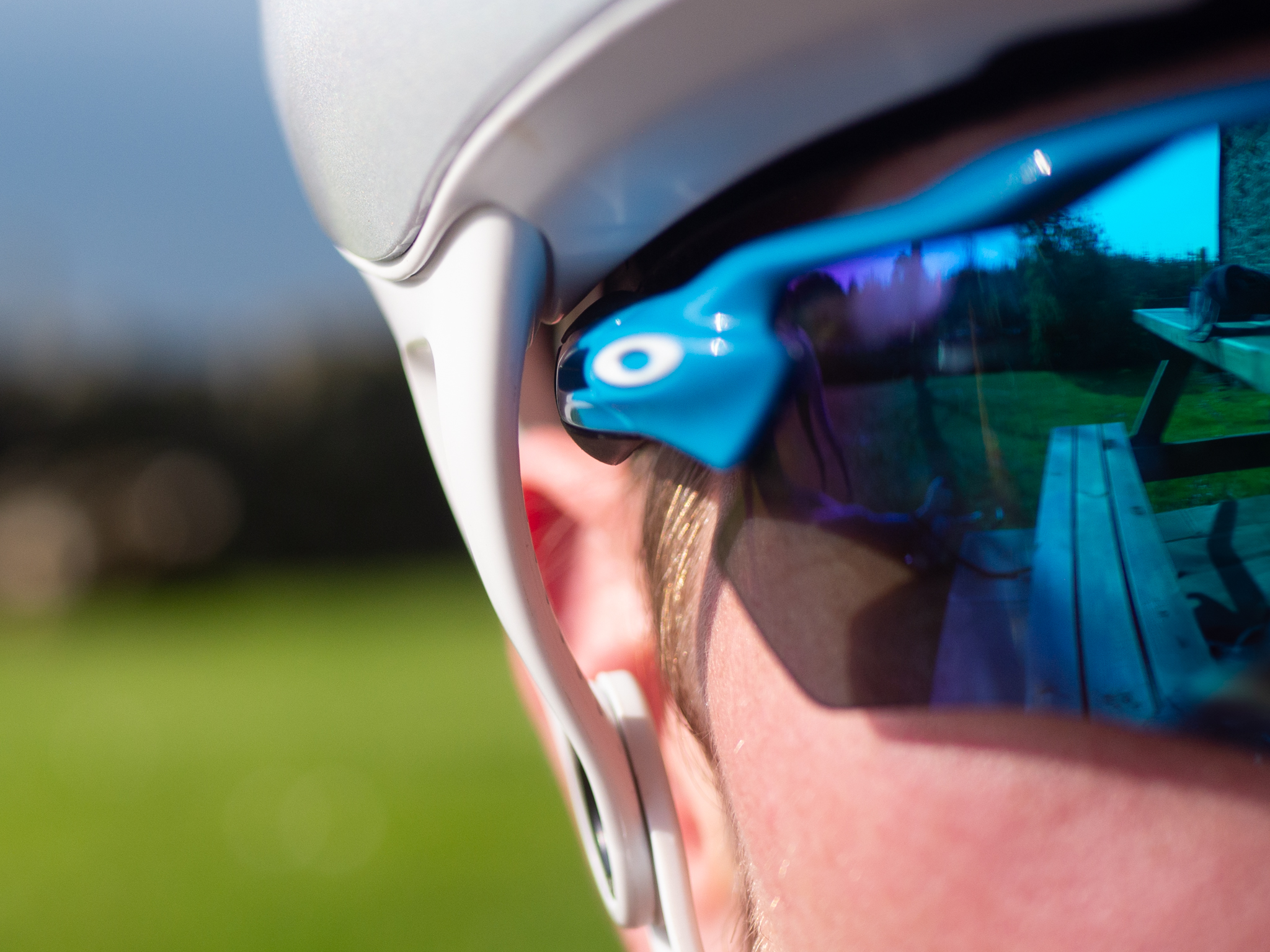
The pivot at the bottom of each V section connects to each end of the strap, which has a retention dial at the centre (beneath the chin), to let you tighten or loosen it.
The pivots have no fixed points, so it doesn't click into place at any specific angles. It floats freely, and in my experience, it sat comfortably beneath my chin, with enough resistance to stop it from swinging back and forth.
The dial sits on the bottom of a housing, and this sat comfortably against my skin without any undue pinching or pressure.
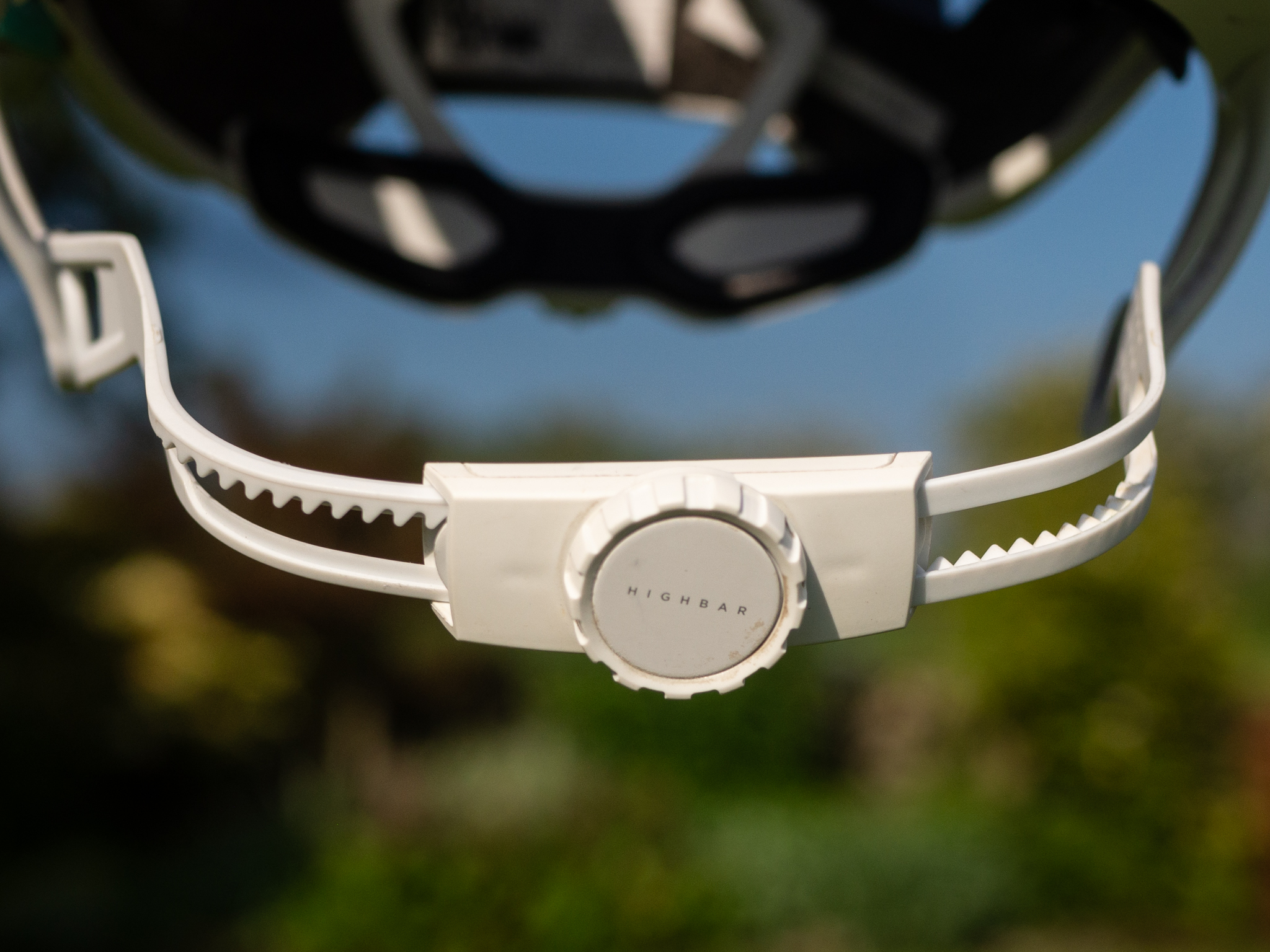
Thanks to the pivots, the whole strap can be pushed forward in front of your face, making it easy to take off, although not as easy as simply unclipping a buckle, and it can be pushed right up against the brow for storage.
Compared to a standard strap, I have to agree that it all looks a bit dorky. It's fairly low profile from a front-on angle, but when you catch yourself from the side, it stands out as different and a bit bulky. With that said, in the post-race photos from the on-site photographer, the helmet didn't really look any different to any other helmet on any other rider around me.
In addition, among the thousands of fellow riders, not once did anyone ask about it, nor did I catch anyone doing a double take. The conversations I had were always ones that I instigated. Had I worn the new POC Procen Air, I think it's safe to say that things would have been different.
Performance
The Procen Air is a good segue into performance, because although that too looks polarising, there's a very strong case for wearing it, and that is its aerodynamic performance. It won our recent wind tunnel helmet test, so it's arguably the best aero helmet on the market right now.
With the Highbar system, the case for wearing it is a little more… woolly.
The primary argument, according to Highbar's Eric Horton, relates to safety; a notoriously hard metric to quantify.
I recently watched a presentation from Horton, which showed close-ups of various riders, pros and amateurs alike, with their helmet straps loose or askew.
Although the retention cradle holds the helmet steady, the chin strap is there to keep it on your head in the event of a crash. It should be comfortably tight. It's no good if it's strangling you, but it's also no good if it lets the helmet slide off your head at the key time.
A quick scan of Getty Images from the Giro d'Italia throws up a variety of different 'techniques'. Some are tight against the face the whole way down, while others are much looser. The following two images, of Geraint Thomas and Rafał Majka respectively, show them both wearing the helmet strap quite loose.
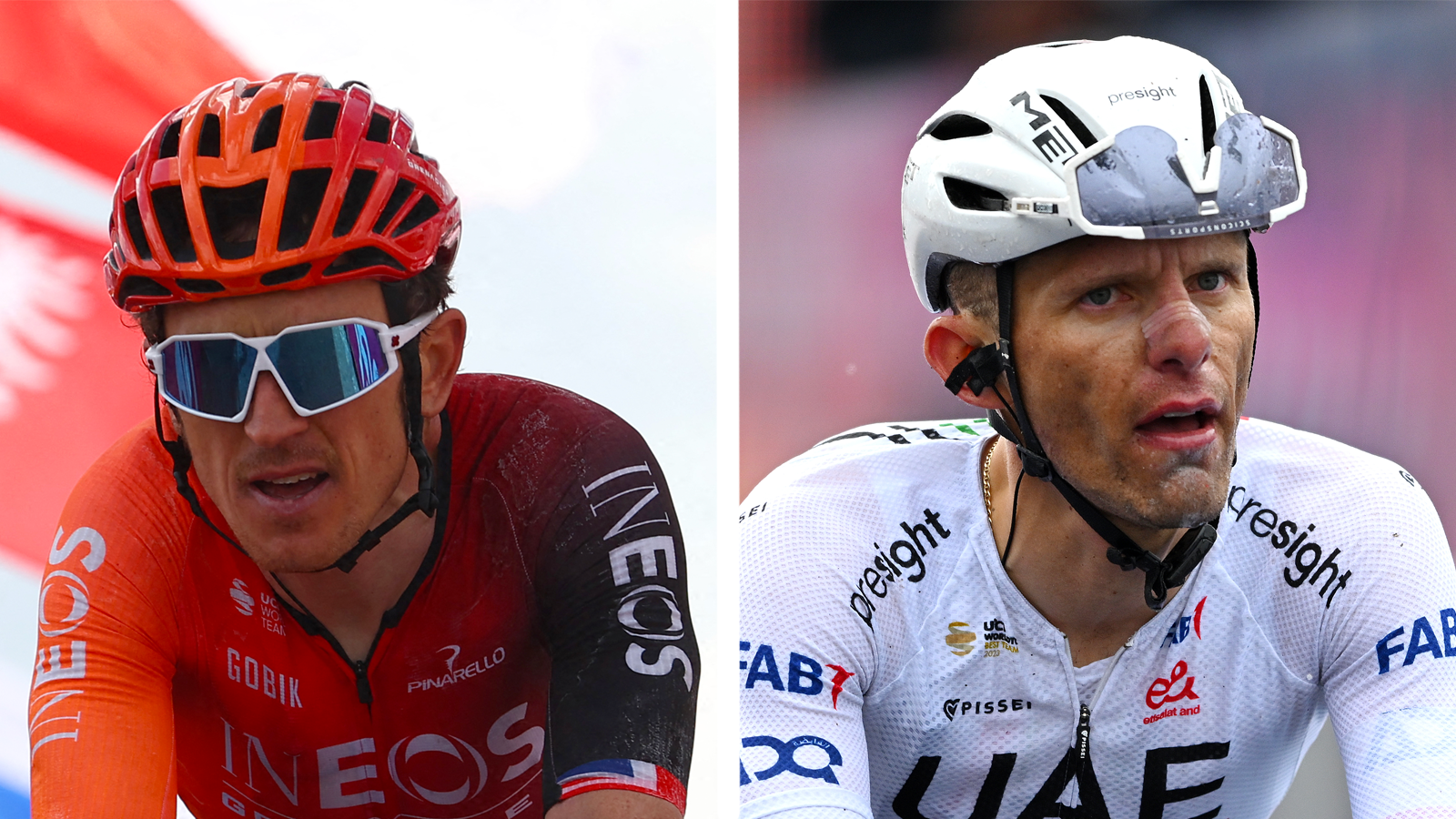
Proper helmet fitment is actually part of Day 1 of the Bikeability training for kids here in the UK, and it also forms part of the UK's National Standard for Cycling Training. Among adult cyclists, though, there's very little training provided. There's no unified way to wear them, beyond what feels comfortable, and that means there's plenty of margin for error.
Highbar's primary claim is avoiding this ambiguity, and thus ensuring that anyone wearing a helmet is wearing it correctly, thus increasing safety. Horton says his team have spent years studying the various industry crash tests, reverse engineering them and ultimately have a product that is safer than the competition as a result.
Thankfully, I remained incident-free during my ride, so I can't speak to its safety. What I can say is that it felt secure and it was comfortable. When first trying it on, the housing of the retention dial beneath my chin was pressing against my Adam's apple and causing pain, but once on the bike and in a riding position this went away. During the ride, the helmet regularly faded from my consciousness; a positive thing for any piece of kit.
One problem I foresee for the Highbar marketing team is the fact that safety isn't very sexy. People are happy to look a bit silly if they can justify it by knowing they'll be faster, lighter, cooler, etc, but whether they will for an increase in safety is yet to be seen.
To that point, there are plenty of secondary claims about the helmet too.
One of them, Horton says, is the ability to adjust it on the fly. I've never felt the need to loosen my helmet mid-climb or tighten it before a descent, but that's one of the advantages Highbar claims to bring with its retention dial. The claim is that looser is cooler, while tighter feels more secure. I tried loosening it off during a difficult climb in the middle point of the race and felt no real benefit. I then forgot to tighten it again before the next descent, which I assume isn't great for the safety aspect and highlights a bit of a flaw.
Perhaps it's something that a regular user would become used to and benefit from, but I am used to helmets being 'set and forget', and old habits evidently die hard.
Another of the secondary claims is one that's becoming more widely discussed lately, which is noise from onrushing wind. Highbar's in-house testing, which put the helmet in a wind tunnel with a decibel meter inside the mannequin's ear, found that it was between 6 and 7.5 decibels quieter.
I can see the logic, with the larger plastic anchor points deflecting more of the wind away from the ears, but it didn't stand out to me as significantly quieter than any other helmet I've used lately. Of course, my testing was far from a back-to-back AB test, so it's anecdotal at best.
Alongside being quieter, Horton says the fixed strap is also marginally faster than a fabric strap. Highbar found that its prototype helmet had 0.004 M² lower drag with the Highbar strap, which it equates to seven watts, at 50km/h.
Unfortunately, despite taking 24 helmets to a wind tunnel last month, this wasn't one of them, so I can't provide any quantifiable comparisons of my own here to back up his claim. The overall helmet design would also play a significant part here, too, so unless a brand chooses to make one helmet available with both a strap system and Highbar, we'll probably struggle to recreate the test.
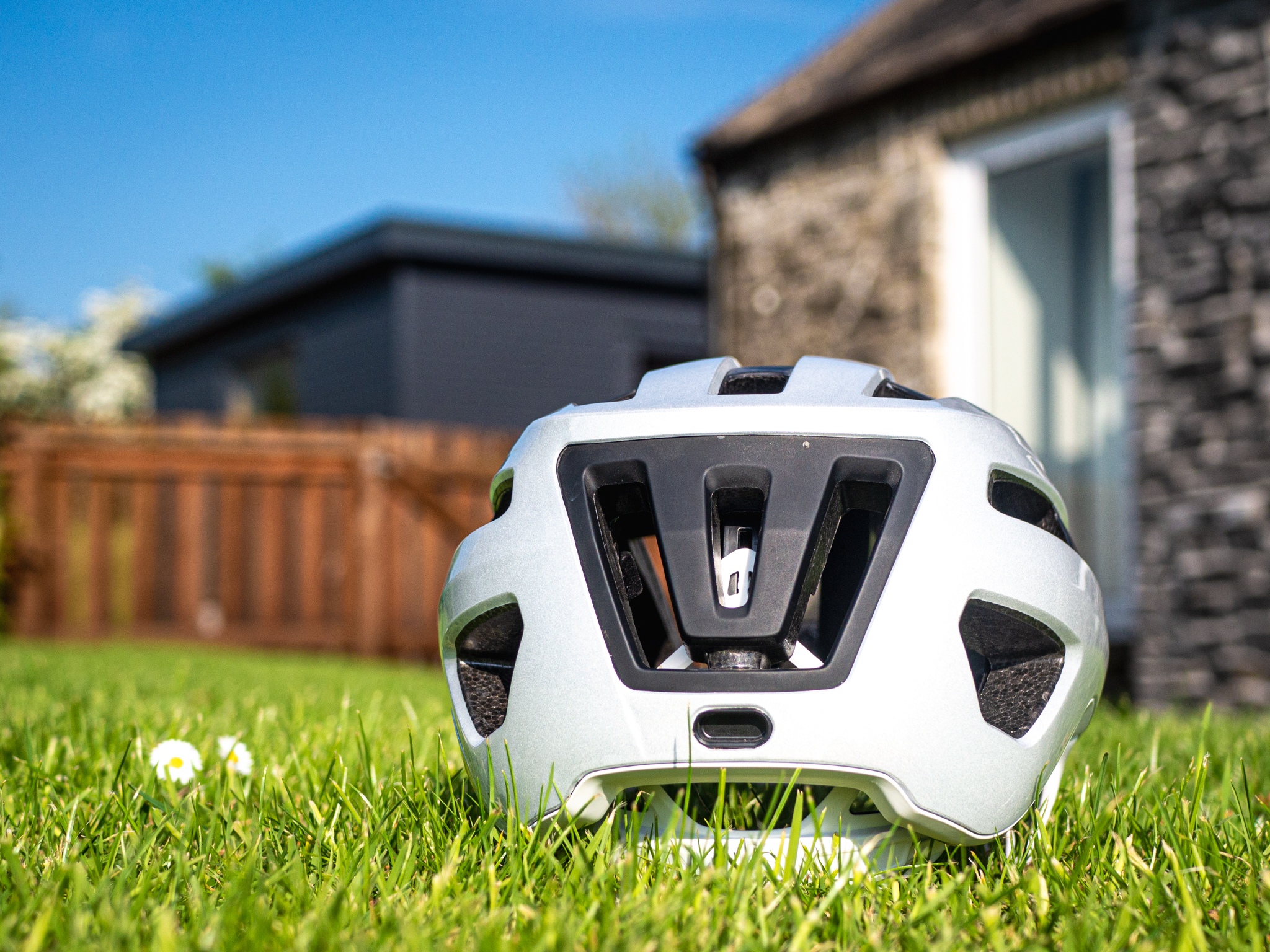
The final secondary claim that Horton mentioned was temperature. Much has been said about how core temperature can affect performance, and one of the big things Kask shouted about with the launch of the Elemento last year was that a cooler head can be just as important to performance as a more aero helmet.
During my ride, I felt as though the helmet's overall temperature regulation was pretty good, and surprisingly for Scotland, it was a scorcher of a day, so a perfect test. Only once, on a slow, hot climb during the peak of the day's heat did I notice a bead of sweat drop into my sunglasses. It's impossible to say whether that was aided in any way by the Highbar system, but as a complete package, it performed well.
Value
Given Highbar isn't available as an aftermarket add-on, the cost will ultimately be worked into the overall retail price of whatever helmet it comes on, and as such, will be variable. Judging its value, therefore, is impossible.
With that said, given that Highbar is a separate company with the intent to license this as a product to other manufacturers, it's safe to assume that on average, it will increase the cost versus a helmet using straps.
If you believe that it is indeed safer, then I would struggle to put a price on increased safety, however marginal. On the other hand, though, it's free to tighten up the straps on your existing helmet, and that's possibly where I see Highbar's biggest hurdle.
Verdict
Overall, despite the unconventional Highbar strap system, the new helmet felt, well, like a helmet. Underwhelming praise, perhaps, but it's positive in the face of a complete redesign of one of its most fundamental components.
While it performed exactly as I'd hoped, it didn't stand out as being faster, quieter or cooler than its competition, and the newfound ability to adjust on the fly didn't really fly with me. On the other hand, it also didn't stand out as being uncomfortable, unsafe, or slow.
Ultimately, the primary goal of removing any ambiguity about how one should wear their helmet straps has been achieved, so that's a big check in the box for Highbar.
I don't see that causing a seismic shift in helmet design, though. If anything, it's just made me think about spending an extra five minutes ensuring my helmet straps are tightened correctly on my other helmets.
While this helmet is a high-end road and gravel helmet, I don't think that's where Highbar will ultimately land. I can see it working well in commuter helmets, where riders are greater in number, often less experienced, and where potential benefits to safety are held in higher regard.
The helmet isn't yet available to buy, so check out Highbar for more information about the system. Alternatively, see our guide to the best road bike helmets and best gravel bike helmets to check out the competition.







